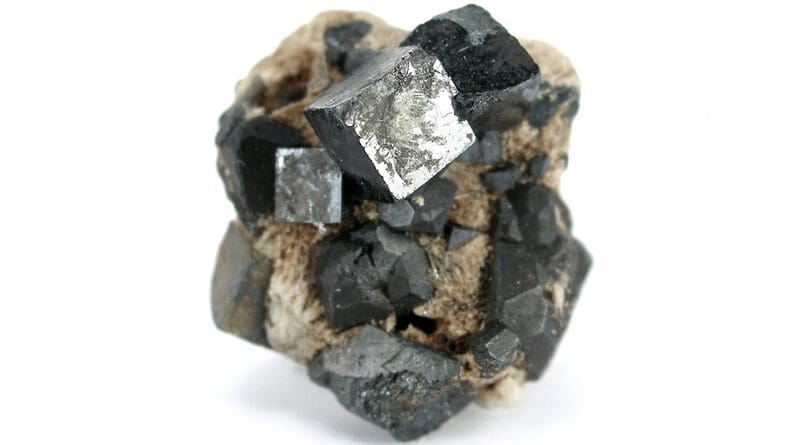Dawn Of Self-Repairing Spacecraft: Perovskite’s Potential To Transform Orbital Infra – Analysis
Space is a tough place filled with strong radiation. Spacecraft and satellite manufacturers need to use materials that can overcome harsh conditions.
In a paper published in January 2024, Ahmad Kirmani from the Rochester Institute of Technology shared with astronomy.com that his team of materials researchers had found that a new semiconductor material, called ‘metal-halide perovskite’—a material discovered back in 1839 and commonly found in Earth’s crust—can actually repair itself after being damaged by radiation.
From the surface, Earth’s crust extends about 5-70 kilometres into the interiors. It covers the entire planet’s surface. The crust is rich in such minerals as silicon, aluminium and oxygen. Temperatures range from cool at the surface to about 500°C-1,000°C in the deepest parts.
Metal-halide perovskites are effective in absorbing sunlight and converting it into electricity. This makes them a promising option for solar panels in space, which could power satellites or future space habitats. Scientists produce perovskites as inks, which they then apply to glass or plastic surfaces. This process creates thin, film-like devices that are both lightweight and flexible.
Amazingly, these thin-film solar cells work just as well as regular silicon solar cells in lab tests, despite being nearly 100 times thinner than traditional ones. However, these thin films can break down when they come into contact with moisture or oxygen. Scientists and companies are now trying to solve these stability problems to make them suitable for use on Earth.
To see how they would perform in space, a technical team created a radiation test. Perovskite solar cells were exposed to both low- and high-energy protons and a unique property was discovered. The high-energy protons repaired the damage caused by the low-energy protons, enabling the device to recover and keep working. Traditional and conventional semiconductors used in space electronics do not have this self-healing ability.
The technical team was astonished by the discovery. How is it possible for a material that breaks down on exposure to moisture and oxygen not only withstand the powerful radiation of space, but also self-repair under conditions that typically damage conventional silicon semiconductors?
Resilient Perovskite Crystals
The team’s research highlights an interesting property of perovskites—their ability to withstand damage and defects. These crystals belong to a category of soft materials, allowing their atoms to shift into various vibrational states, which scientists refer to as ‘vibrational modes’.
Perovskite’s atoms are normally formed into a lattice structure. However, radiation can displace these atoms, causing damage to the material. The vibrations within the material might help realign the atoms, although the technical team is still uncertain about the exact mechanism behind this process.
Soft Materials for Use in Space
The research suggests that soft materials could be particularly useful in harsh environments, such as those found in space. Radiation is just one of the many challenges that materials face in space. Scientists are still unsure how perovskites will perform when subjected to vacuum conditions, extreme temperature changes and radiation—all at the same time. Temperature might influence the healing behaviour observed by researchers, but more studies are necessary to understand its exact role.
These findings indicate that soft materials could help scientists create technology that functions well in extreme conditions. Scientists now want to research what role vibrations play in enhancing the self-healing abilities of these materials.
The Future of Space Materials
Scientists believe that, in the next 10 years, the number of satellites launched into near-Earth orbit will grow rapidly. Additionally, such space agencies as NASA plan to set up bases on the Moon. Materials that can withstand extreme radiation and repair themselves would be a game-changer.
Researchers estimate that sending just a few pounds of perovskite materials into space could produce up to 10 million watts of power. Currently, it costs about $4,000 (INR 3.3 lakh) per kilogram to launch materials into space, so using efficient materials is crucial.

